How To Get Rid Of Hornworms In Your Garden
Perhaps one of the most hated garden pests ever is the dreaded tomato hornworm. The gargantuan (compared to other pests!) creepy-crawly has gained evil villain status among gardeners.
Hornworms are large caterpillars that are attracted to tomato plants and other nightshade edibles like peppers and eggplants. They're easily camouflaged, so despite their chunkier stature, you might not spot them right away.
Left to their own devices, they'll chew through your plants without stopping – leaves, stems, fruits, and all. They're hungry little monsters!
If you're struggling with these annoying pests, here's everything you need to know to get rid of them.
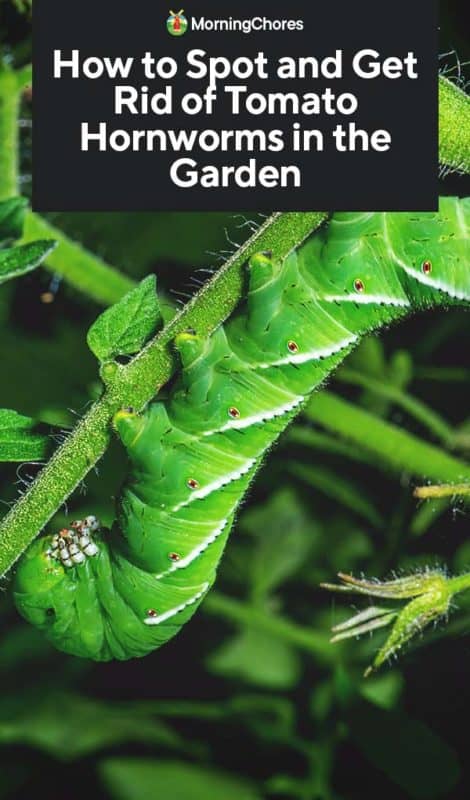
Roots of the Hornworm's Bad Reputation
Why do gardeners despise this big worm? I have a few guesses.
First, there's the fact that they're voracious eaters. They can devour an entire plant in practically no time at all. But that's not the only reason people hate this green pest.
It Attacks Tomatoes
People love tomatoes. The tomato is the holy grail of edible plants. It's one of the most popular and one of the first plants people try to grow as beginner gardeners. The juicy garden tomato is a real prize.
Hornworms can decimate a tomato crop, so, understandably, gardeners loathe them.
It's a Big Bug
Tomato hornworms are large creatures compared to tiny pests like aphids and whiteflies. The worms are some of the biggest garden pests you'll encounter.
Spotting a hornworm on a tomato stem is a startling occurrence. The first time I saw one, I jumped back and had to gain my composure before inspecting it again.
Adults are Scary
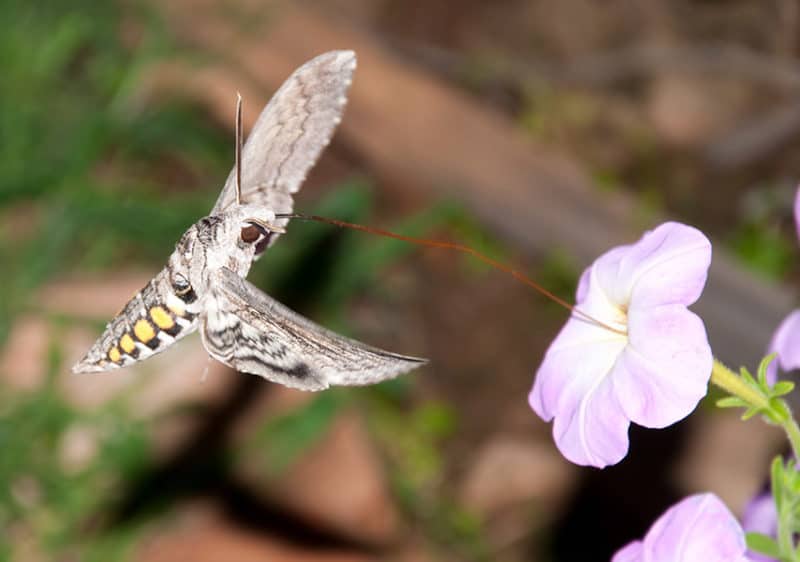
The adult hornworm is a type of hawk moth that is also known as the sphinx moth. The large moth is distinct in appearance and seeing it is somewhat jarring.
As someone who is terrified of moths, when I spot the chubby hornworm caterpillar in my garden, I instantly fear I'll see the bug in its adult form.
What are Tomato Hornworms?
Hornworms can grow up to 5-inches in length (yuck!) and are the color of tomato foliage, so they hide easily among plant leaves. They also have white and black marks on their body and a horn-like tail – though, this is just for show, thankfully.
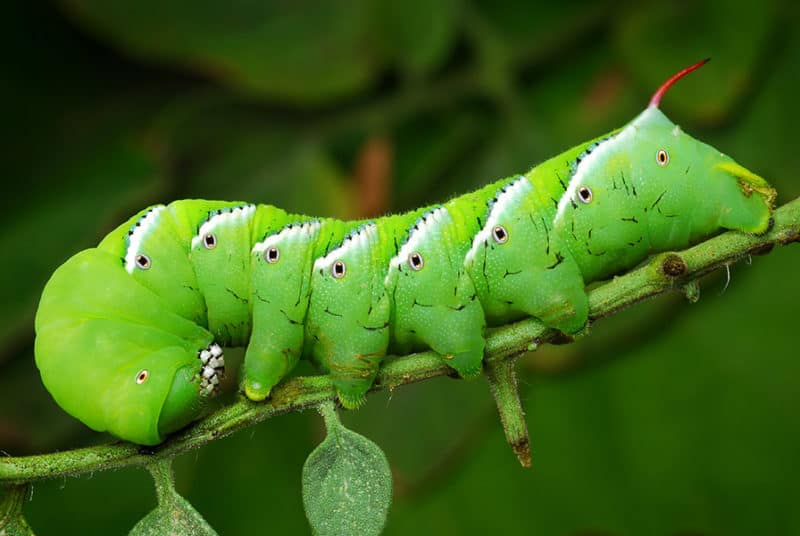
Similar to tomato hornworms are tobacco hornworms, which look slightly different but are attracted to similar plant life. Tobacco worms have a horn-like tail, which is distinctly red in color.
The Hornworm Lifecycle
Adult females lay eggs on the undersides of leaves in the springtime. Once hatched, the larvae feed continuously – often for over a month. They then create a cocoon and overwinter in the soil.
Unless they're in areas with a long growing season, they don't produce multiple generations in a single year.
Signs of Hornworm Activity
Careful inspection of plants is your best bet at spotting hornworms before they incur severe damage, but the skilled hiders aren't easy to spot. Here are some signs of hornworm activity:
- Leaves that look as if they've been chewed.
- Plants that have missing leaves that you can't find elsewhere (e.g., those that have fallen onto the soil).
- Dark-colored droppings left behind on the tops of leaves.
- Wilted leaves on stems nearly stripped of leaves.
- Leaves with large holes and tomato flowers that have been eaten.
Because hornworms love to strip plants of foliage, the fruit on your plant may be more susceptible to sun damage, as well.
How to Deal with a Hornworm Infestation
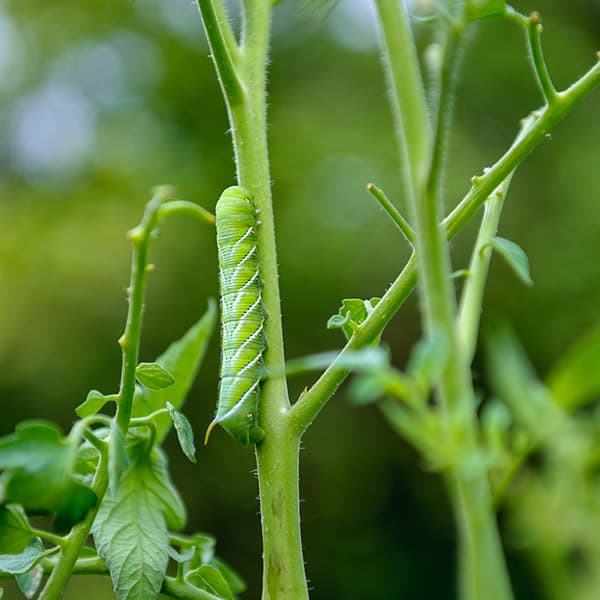
It's tempting to close your eyes, go back inside, and ignore the problem. I've rarely ever spotted more than one or two worms hanging around my plants. But to avoid complete crop failure, it's best to address the problem head-on.
Tackle a tomato hornworm infestation swiftly to prevent further damage to your garden. Hornworms will quickly devour plants in your yard if left to feast. Because of their hearty appetite and large size, even a handful of worms can irreparably damage a small garden in a few days.
Here's what to do when you spot hornworms in your garden:
Physically Remove Them
Oh yes, I know it's hard. They're so big and yucky, but handpicking them and crushing or drowning them in soapy water is an effective method of control. Enlist the kids if necessary.
Use Bacillus Thuringiensis
For a heavy infestation, use Bt to control your garden's hornworm population. The bacterium poisons the crawling insects and eventually kills them. It needs to be reapplied several times to be effective.
Try Homemade Soapy Sprays
You'll need to spot the hornworms and spray them directly for this to work, but it's a cheap, effective, DIY solution.
Sprinkle Diatomaceous Earth
You have to re-apply it often, but with persistence, DE can help kill these pests.
Introduce Predator Insects
Predator insects are an excellent control for hornworms. Parasitic braconid wasps lay eggs on the caterpillars, and when the larvae hatch, they consume their host. It sounds like a horror movie, but in the end, it keeps the worms from attacking your plants!
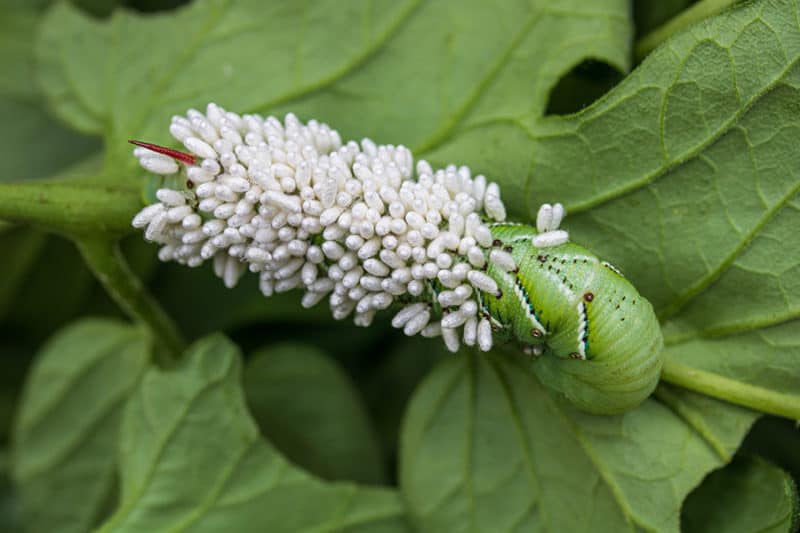
Other beneficial insects, like ladybugs, eat hornworm eggs and babies.
How do you encourage predator insects?
Think of yourself as the sheriff of your garden. You're the law, and beneficial bugs are your trusted deputies. But you need to provide them with good pay and benefits, so they're motivated to apply to the job and stick around!
Plant flowers and native fauna to attract predator insects. I love having a garden filled with edibles, but I wouldn't dream of planting only vegetables. I also grow a sizeable patch of flowers to attract friendly bugs to my garden.
You can also purchase beneficial insects and release them into your garden, but it's crucial that you follow release instructions to the letter.
How to Prevent Hornworms
If you're wondering how to prevent tomato hornworms from appearing in your garden in the first place, here are some prevention tips to help you keep them out of your sacred space:
- Kill larvae and destroy cocoons: If you spot cocoons, destroy them immediately. Turn the soil over at the beginning and end of the gardening season to destroy any hornworms that have overwintered in the ground.
- Use companion planting tricks: Plant pest-deterring plants like marigold and dill near your nightshade plants to deter hornworms.
- Mulch: Mulch with plastic to prevent hornworm adults from breaking out through the topsoil. The black plastic also helps warm the soil keeping your nightshade plants nice and toasty – just how they like it!
Some people recommend netting, but I find it a pain in the butt for plants that require pollination to bear fruit. It's too much of a hassle to periodically remove the netting, and when doing so, you run the risk of introducing and trapping pests that can wreak havoc undercover.
Now You're Ready to Conquer These Pests
Have you ever dealt with hornworms in your garden? What were the challenges you faced when dealing with this pest? Do hornworms make you squeamish? We want to hear about your tomato hornworm stories!
Was this article helpful?
Yes No
How To Get Rid Of Hornworms In Your Garden
Source: https://morningchores.com/tomato-hornworms/
Posted by: shiressucarty.blogspot.com

0 Response to "How To Get Rid Of Hornworms In Your Garden"
Post a Comment